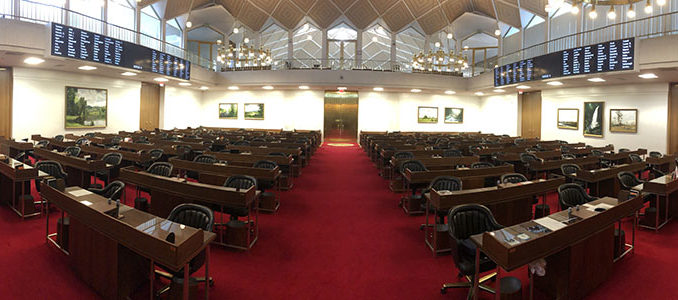
RALEIGH — Speaking to Stanly County Journal on Aug. 23, Rep. Wayne Sasser, a Republican in the N.C. House, who represents most of Stanly County, said he was able to secure around $100 million in various projects that benefit Stanly County residents directly in the recently passed budget. The budget was passed by the House with a veto-proof majority, but the final version that will be sent to the Gov. Roy Cooper will still need to be worked out with the Senate.
The biggest chunk of funding for Stanly in the House budget, $28 million, is dedicated to the Stanly County Airport.
“That’s a regional Office of Emergency Management facility,” Sasser said of the airport expansion. “Some of the things that will be there include a 747 simulator that will simulate airplane crashes. People from all over the United States will come into the Stanly County Airport to train at that facility. That’s going to be a big deal for Stanly County.”
He said a lot of the initial momentum for this regional facility came from the Senate side, especially with Stanly County’s state senator, Carl Ford. For this reason, this project will likely survive any negotiations between the two chambers.
The House budget also has a lot of funding directed towards Badin Lake and Morrow Mountain to improve roads and other infrastructure. Sasser said when he was a freshman, he noticed Morrow Mountain was getting skipped over for some funding. He said, at one point, he stood up on the House floor to inquire about it and got assurances the park would be included in future appropriations.
He said among the funds are $1 million to resurface the roads that are there, as well as another $1 million to build a road from the swimming pool at Morrow Mountain to Falls Reservoir in the city limits of Badin.
“For the half-a-million people that go to Morrow Mountain every year, their closest access to gas, restaurants, that type of stuff, will be Badin,” Sasser said on the impact of that new road.
He said they also put money towards a pier that was damaged in a storm on Morrow Mountain, and it’s likely already completed.
“A lot of good things going on up at Morrow Mountain showing how important it is regionally, and also of course to Stanly County,” Sasser said.
Another major area of funding in the budget that would benefit Stanly County are a number of drug-treatment facilities, both in and out of the county, but which serve the residents. TROSA, a major long-term treatment program out of Durham, received $11 million to fund an expansion to Winston-Salem. Sasser said Bridge to Recovery, a short-term facility with facilities in Union and Stanly counties, sends many of their participants to TROSA. Bridge to Recovery itself received $500,000 in this budget
Gateway of Hope is a newer project out of New London that aims to treat many of these patients closer to home. They received $1 million. A local pastor, Larry Wilkins, who runs multiple half-way houses in Locust, will run this program. Sasser said the money will go to building some housing for participants of Gateway of Hope as they create the new program.
Sasser said as a pharmacist, he feels especially called to respond to the opioid crisis and sees it as a passion and expertise of his. Now as co-chair of the Health and the Health Appropriations committees, he has a big influence on how funding for treatment programs gets distributed in the state. Of particular concern is how to spend the opioid settlement money that big pharmaceutical companies are paying out for their role in the crisis. He said up to 70% will go directly to the counties, but with the portion that the state received, Sasser said he wanted to make sure that “got to where it needed to.”
“I’ve been working with DHHS [the N.C. Dept. of Health and Human Services] and with the attorney general’s office to make sure this opioid settlement money — and we could be looking at $750 million over the next 15 years or so — trying to make sure this money goes to what it was intended to do,” Sasser said. “It’s meant to treat people who have been affected by opioids, not end up like tobacco settlement money ended up — which didn’t cure any cancer, didn’t stop anybody from smoking, it just built a lot of nice buildings in North Carolina.”
